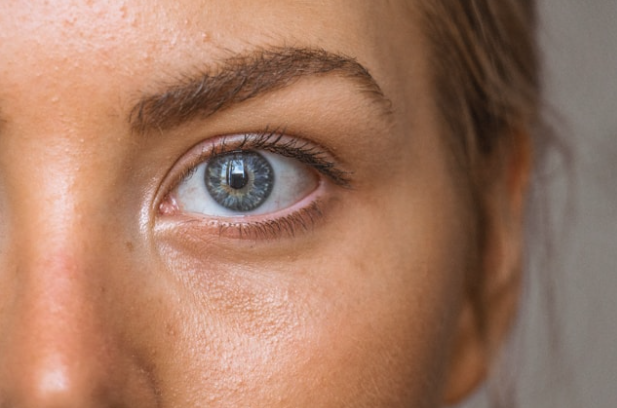In the ever-growing world of skincare, eye cream is one of the most debated products. Some people swear by it, while others argue it’s just an overpriced moisturizer in a tiny jar. So, what does eye cream actually do? Is it worth incorporating into your skincare routine, or is it an unnecessary step?
This guide will help clear the confusion by breaking down what eye creams are designed to do, the common concerns they address, and whether or not they deserve a spot on your skincare shelf.
Understanding the Delicate Eye Area
Before diving into what eye cream does, it’s important to understand why the eye area needs special attention. The skin around your eyes is thinner, more delicate, and more prone to dryness than the rest of your face. It also lacks oil glands, making it more vulnerable to fine lines, puffiness, and dark circles.
On top of that, facial expressions like smiling, squinting, and blinking constantly stress the eye area, accelerating the formation of wrinkles. Because of these characteristics, products designed for the rest of your face might be too harsh or irritating for your eyes.
What Does Eye Cream Actually Do?
Eye creams are formulated to target specific issues related to the under-eye area. While individual results can vary depending on ingredients and skin type, here are the primary benefits eye creams offer:
1. Hydration
Hydrating the under-eye area helps plump up the skin, minimizing the appearance of fine lines and giving your eyes a more refreshed look. Ingredients like hyaluronic acid, glycerin, and squalane are commonly used to lock in moisture.
2. Reducing Puffiness
Many eye creams contain ingredients like caffeine, green tea extract, or peptides that help reduce fluid retention and improve circulation, thereby decreasing puffiness or “bags” under the eyes.
3. Brightening Dark Circles
Dark circles can be caused by a number of factors, including genetics, fatigue, and thinning skin. Eye creams with ingredients such as vitamin C, niacinamide, and licorice root extract may help brighten the under-eye area over time.
4. Minimizing Fine Lines and Wrinkles
Anti-aging eye creams often include retinol, peptides, and antioxidants. These ingredients promote collagen production and cellular turnover, which can reduce the appearance of crow’s feet and fine lines.
5. Soothing and Protecting
The eye area is particularly sensitive, and exposure to environmental stressors like UV rays and pollution can lead to irritation. Eye creams with calming agents like chamomile, aloe vera, or panthenol can help soothe and protect the skin.
Are Eye Creams Different from Regular Moisturizers?
A common argument against eye creams is that they’re simply facial moisturizers in smaller packaging. While both moisturizers and eye creams hydrate the skin, eye creams are usually formulated with a lower concentration of active ingredients to reduce the risk of irritation. They also tend to be fragrance-free and ophthalmologist-tested to ensure they’re safe for use around the eyes.
Additionally, the textures are often different—eye creams are usually lighter and more easily absorbed to avoid heaviness or clogging in this delicate area.
Who Should Use Eye Cream?
You don’t necessarily need to wait for fine lines or dark circles to appear before using an eye cream. In fact, early prevention can be one of the best strategies. Here’s who can benefit the most from using eye cream:
- People with dry under-eye skin
- Those with hereditary dark circles or puffiness
- Anyone over the age of 25 interested in preventative skincare
- People exposed to high screen time or sun exposure
- Individuals using active ingredients like retinoids elsewhere on the face, which may be too harsh for the eye area
Even if you’re not dealing with visible signs of aging yet, a well-formulated eye cream can help preserve the skin’s elasticity and appearance over time.
Choosing the Right Eye Cream
Not all eye creams are created equal. Selecting one that suits your skin type and concerns is key to seeing real results.
1. For Puffiness
Look for products with caffeine, peptides, and anti-inflammatory ingredients.
2. For Dark Circles
Vitamin C, kojic acid, and niacinamide can help lighten pigmentation and brighten the area.
3. For Fine Lines and Wrinkles
Retinol, peptides, and growth factors are your go-to ingredients. Just be sure the formulation is gentle and specifically made for eyes.
4. For Sensitive Skin
Stick to fragrance-free formulas with soothing agents like aloe, panthenol, and ceramides.
If you’re seeking a luxurious and clinically proven option, consider high-performance brands like Valmont. Many skincare professionals recommend their eye treatments for noticeable, long-term results. You can buy Valmont from Loshen & Crem to ensure you’re getting authentic, high-quality products.
How to Apply Eye Cream Properly
Even the best eye cream won’t work well if it’s not applied correctly. Follow these steps to get the most out of your product:
- Use a Pea-Sized Amount: A little goes a long way. Use your ring finger to scoop out a tiny amount of product, as it applies the least pressure.
- Gently Tap (Don’t Rub): Pat the cream gently along the orbital bone (the bone surrounding your eyes), from the inner to the outer corner. Avoid getting too close to the lash line unless the product is meant for that area.
- Apply Before Moisturizer: Eye cream should typically go on before your regular moisturizer or facial oils to ensure better absorption.
- Use Morning and Night: Most eye creams are safe to use twice daily unless they contain strong actives like retinol—those are usually best applied at night.
Eye Cream Myths—Busted
Let’s tackle a few common myths:
Myth 1: “You don’t need eye cream until you’re older.”
False. Prevention is better than cure. Starting early helps maintain skin health and delay visible aging.
Myth 2: “Eye cream can eliminate dark circles overnight.”
False. Most eye creams take weeks or months to show results, and some dark circles (especially those caused by genetics) may never completely disappear.
Myth 3: “All moisturizers can double as eye creams.”
False. Some facial moisturizers contain ingredients that can irritate the eye area or be too heavy for that thin skin.
So, Is Eye Cream Worth It?
The answer depends on your individual needs. If you’re looking to hydrate the under-eye area, reduce puffiness, combat fine lines, or brighten dark circles, eye cream can be a worthy investment. However, if you’re already using a gentle, effective moisturizer and don’t have specific under-eye concerns, you may be able to skip it.
That said, specialized concerns often require targeted solutions, and eye creams are formulated for just that. Like any skincare product, consistency and choosing the right formula make all the difference.
Final Thoughts
Eye creams aren’t a miracle in a jar—but when used consistently and chosen wisely, they can significantly improve the appearance and health of your under-eye area. Whether you’re concerned about aging, puffiness, or pigmentation, there’s likely an eye cream designed to meet your needs.
Think of eye cream as a preventative tool and a focused treatment. It’s not always essential for everyone, but it’s certainly beneficial for many. The key lies in selecting the right product and applying it correctly.


